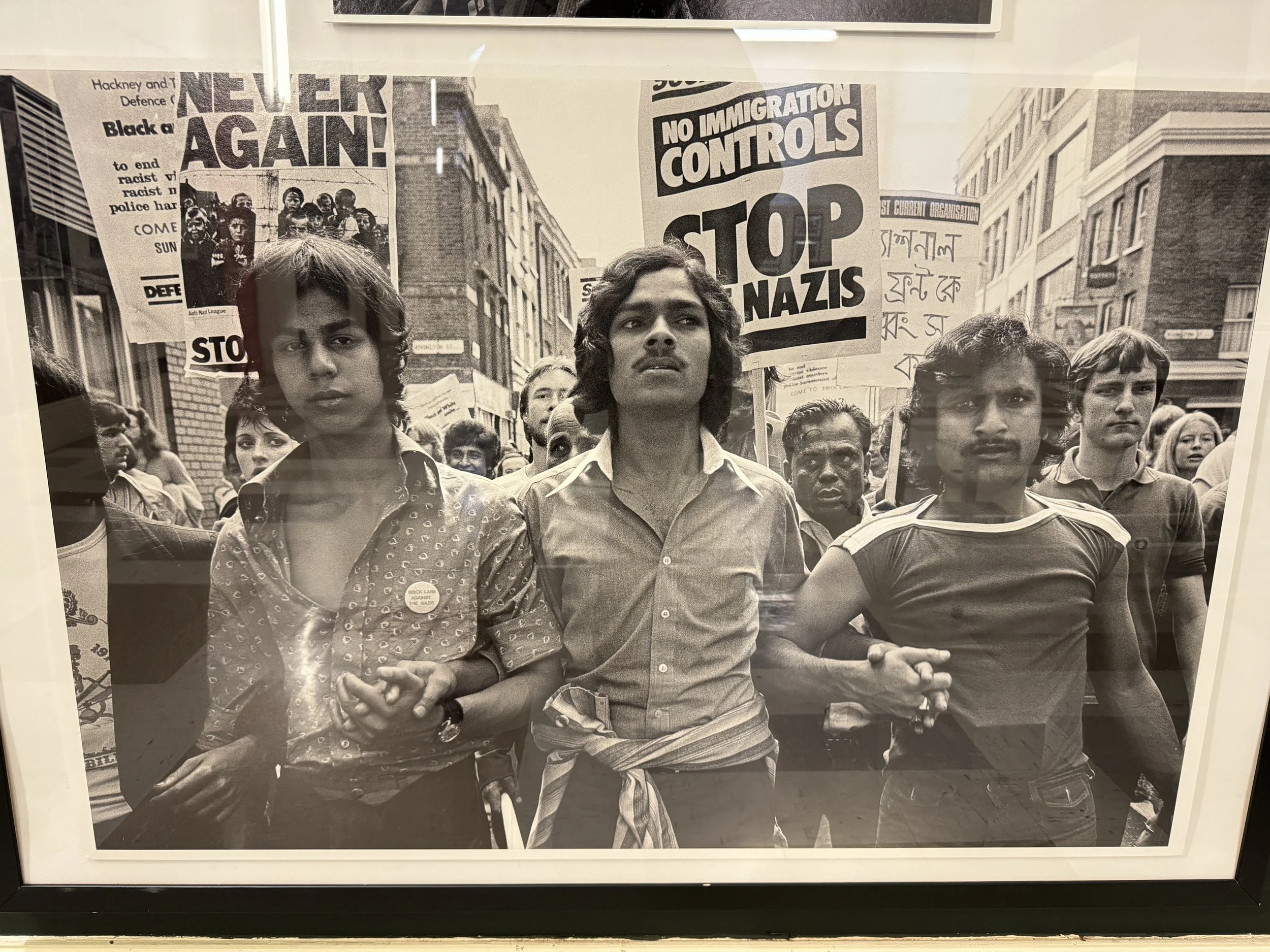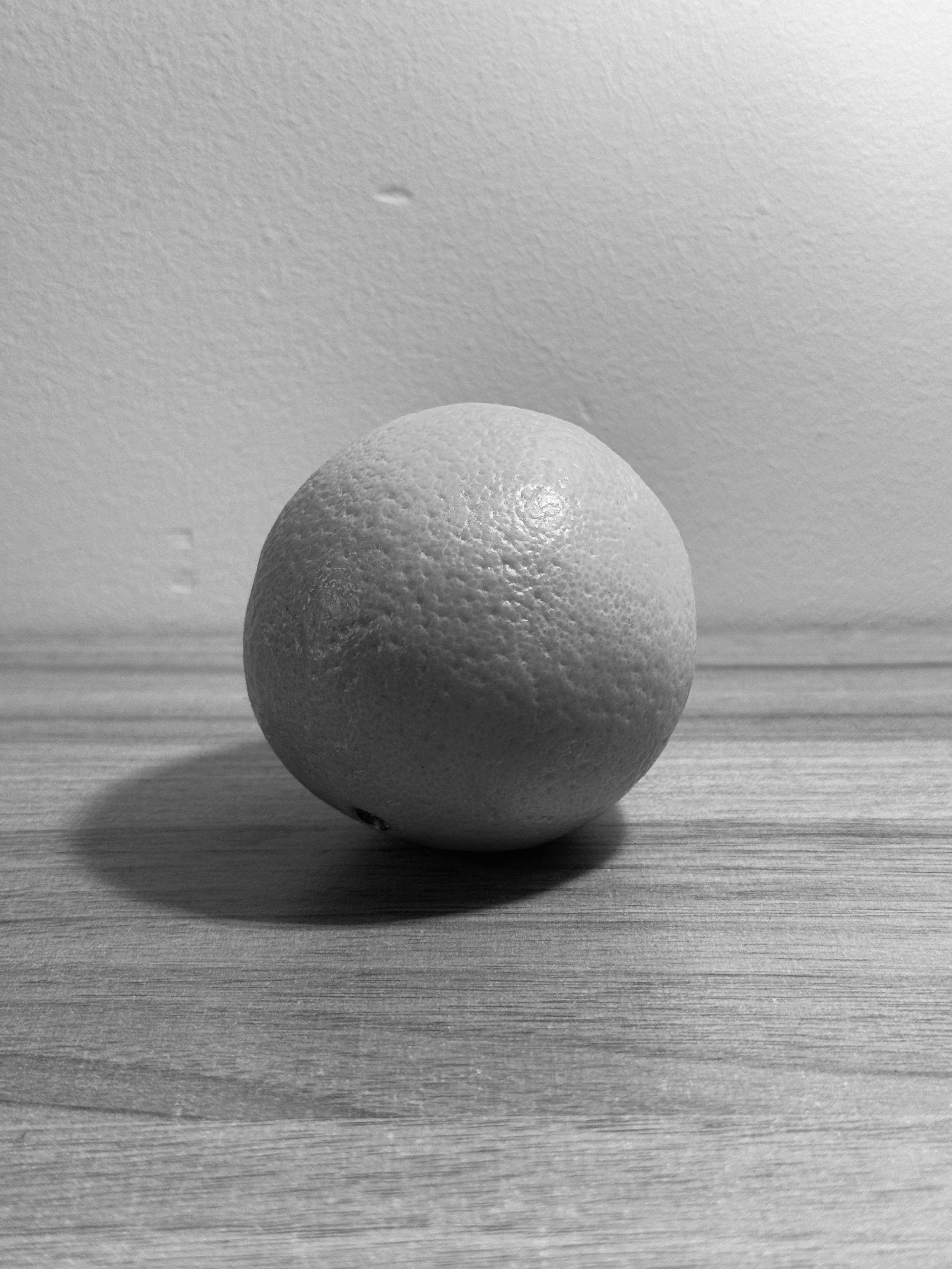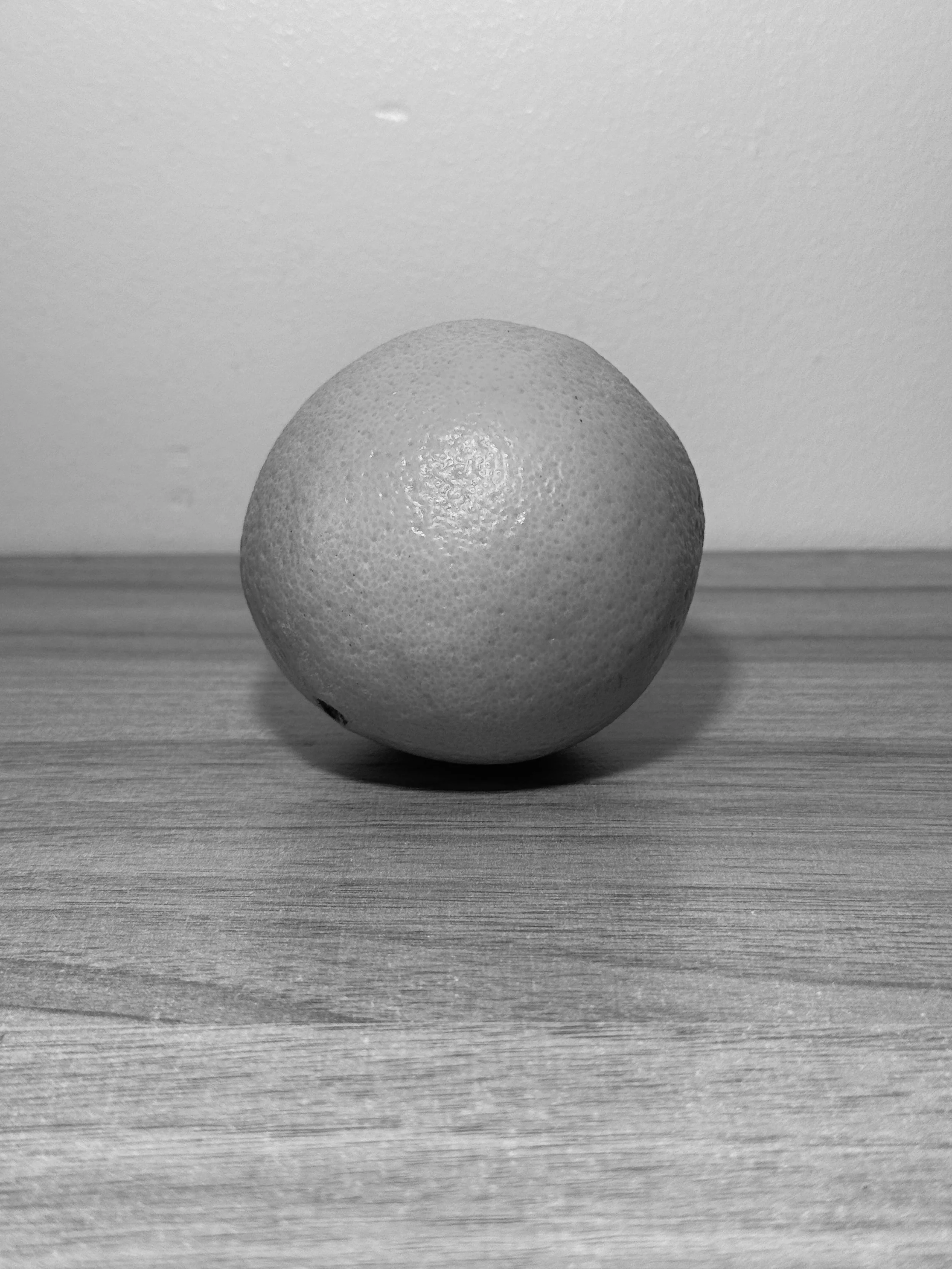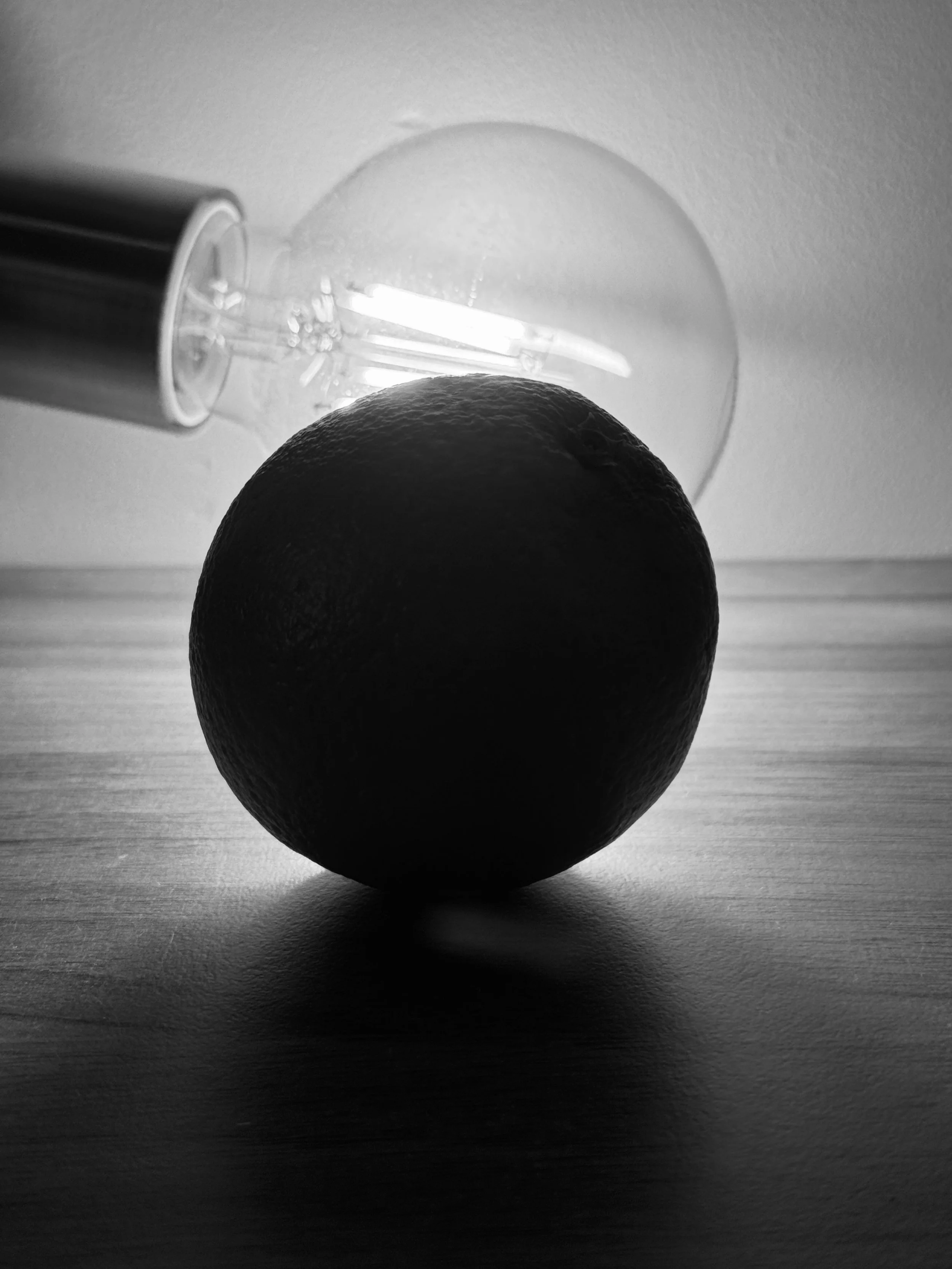The photo I have chosen to discuss is from the “Brick Lane 1978 Turning Point” series. This photo was particularly striking to me for a multitude of reasons. Beginning with the camera, I would reckon this was shot on a 35mm film camera. The composition is not quite a shallow depth of field, it seems like Paul Trevor used some sort of mid range aperture to capture not only the three primary subjects, but a sort of middle ground of faces and signs behind them too. The depth created leaves me under the impression that Trevor was using somewhere between a 35mm and 50mm lens. There is not quite the compression on the photo that would suggest something above 50mm, but there is also not any sort of warping/stretching that would signal the use of a wide angle lens. It’s a tough angle to tell as there are so many figures and they are so close and upfront, that it almost overwhelms the viewer. For the framing of the shot Trevor employs this angle just below eye level that although it’s slight, conveys a sort of power and intensity through the protest; as if they are going to run you over with their march. The tone of the photo is quite bright and well lit as it appears to be filled with daylight. In the deep background there are strong diagonal lines created by the buildings lining either side of the protestors. Through these different elements, this composition emits a sense of strength and resilience in the photo. As a whole this photo provides a look into the clash by local Bengali activists against the National Front and Nazi League in Brick Lane, Shoreditch. In 1978 specifically, they were protesting the racist murder of Altab Ali. As a series what struck me about these photos was not just the photojournalism of the protest, but the subtle imagery of cultural assimilation. In just about every photo I thought it was fascinating to see a combination of Bengali immigrants in not just traditional Bengali clothing, but also 70s western style clothing too; flared pants and giant pointed collars. I appreciated the photo series as it was clear Trevor did not shoot on anything beyond 50mm. If anything he just became closer and closer to the protests himself, he was not using some telephoto lens trying to be a mere onlooker. By engaging with the protest, putting himself inside of it, and photographing the surroundings all in close proximity, Trevor enacts a much more emotional response through its intimacy. I think the written descriptions are absolutely useful in informing context about what is occurring, but what makes this photojournalism successful is that those texts are absolutely secondary to the imagery. Everything one needs to understand the situation is photographed more or less. There is a story being conveyed through these images.
Paul Trevor, “Brick Lane 1978 Turning Point”, 1978
This week I chose to employ the local orange’s modeling talents to experiment with lighting. I used my desk lamp as the source of light for all 6 photos. Starting with the first four photos I chose to photograph the orange with no light and then move the light from the right to left side of the orange. In my opinion, The only discernible difference in mood is when the orange has no light, which just makes it look a bit more natural in my perspective. I think that opinion is completely personal and not necessarily shared. The shadow play using the lights is interesting because it shifts where the focus is on the skin of the orange. This is done both through the glare the light puts on the orange, and the texture that is enhanced by the shadow. In the final two images I light the orange at different angles from behind. These angles were particularly interesting as it almost reminded me of photographs of the moon with earth in the background. They appear very moody and it seems to clearly suggest the physical orange may not actually be the interesting/subject matter of the photograph.







